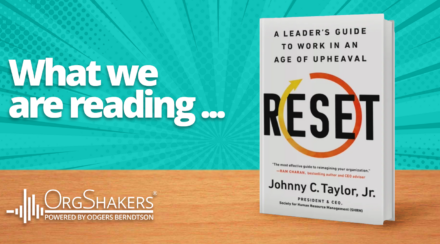Menu

Why the 85:15 Rule Might be the Key to Tackling Burnout
Encouraging individuals to ‘give it 100%’ is a well-worn cliché. But is it actually the best way to optimize personal performance?
Those advocating the 85:15 rule – working at 85% capacity and keeping 15% for yourself – would beg to differ.
The 85:15 rule is thought to have stemmed from a technique used by Olympian Carl Lewis and his coach, who argued that athletes who were keeping 15% ‘in the tank’ rather than giving it the full 100% the whole time were much better at keeping pace for the duration of a race. And, considering Lewis won nine Olympic gold medals and one silver, he might have been onto something.
As an HR professional, part of my role is aiding an employer in optimizing their people power, but sometimes the thing that may help employees function at their best is by knowing at what point someone is optimized enough.
When we break it down, an employee working at their optimum does not automatically mean they are working at 100%. In fact, unknowingly, it usually means they are functioning at around the 85% mark. This is what all employers should be striving for with their teams, as this promotes a sense of consistency in the quality of work being produced that is realistic, reduces risk of burnout, and helps employees find more balance between work and life.
This idea of ‘giving everything you’ve got’ to your job is a somewhat outdated one, and has been carried over from previous generations of workers who were working in an ‘always-on’ culture. This ‘always-on’ ideology continues to loom in the face of remote and hybrid work blurring the lines between home life and work life, and so it is important for employers to be taking note of strategies such as the 85:15 rule to help prevent employees from being overworked.
What is very important to remember with this rule is that it isn’t saying ‘don’t try’, it’s saying ‘don’t burnout trying’! Keeping that 15% energy reserve helps prevent employees getting home from work and being too exhausted to do anything – even something as basic as making a meal. And when this is paired with the fact that many people have responsibilities outside of the workplace – caring for children, caring for elderly relatives – it only increases the importance of acknowledging this way of working.
This mindset also lends towards the encouragement of better brain health at work, and reminds employees how important it is to nourish and rest their brains in order to allow it to function to the best of its abilities.
With burnout from workplace stress at an all time high (over 40% across US and UK said that they were burnt out), leaders who are practicing this mindset and actively instilling it in their workplaces are normalizing the idea that it is okay to keep some energy for yourself, your brain, and your bodily health.
If you would like to discuss how we can coach the 85:15 rule in your workplace, please get in touch with me at stephanie.rodriguez@orgshakers.com



